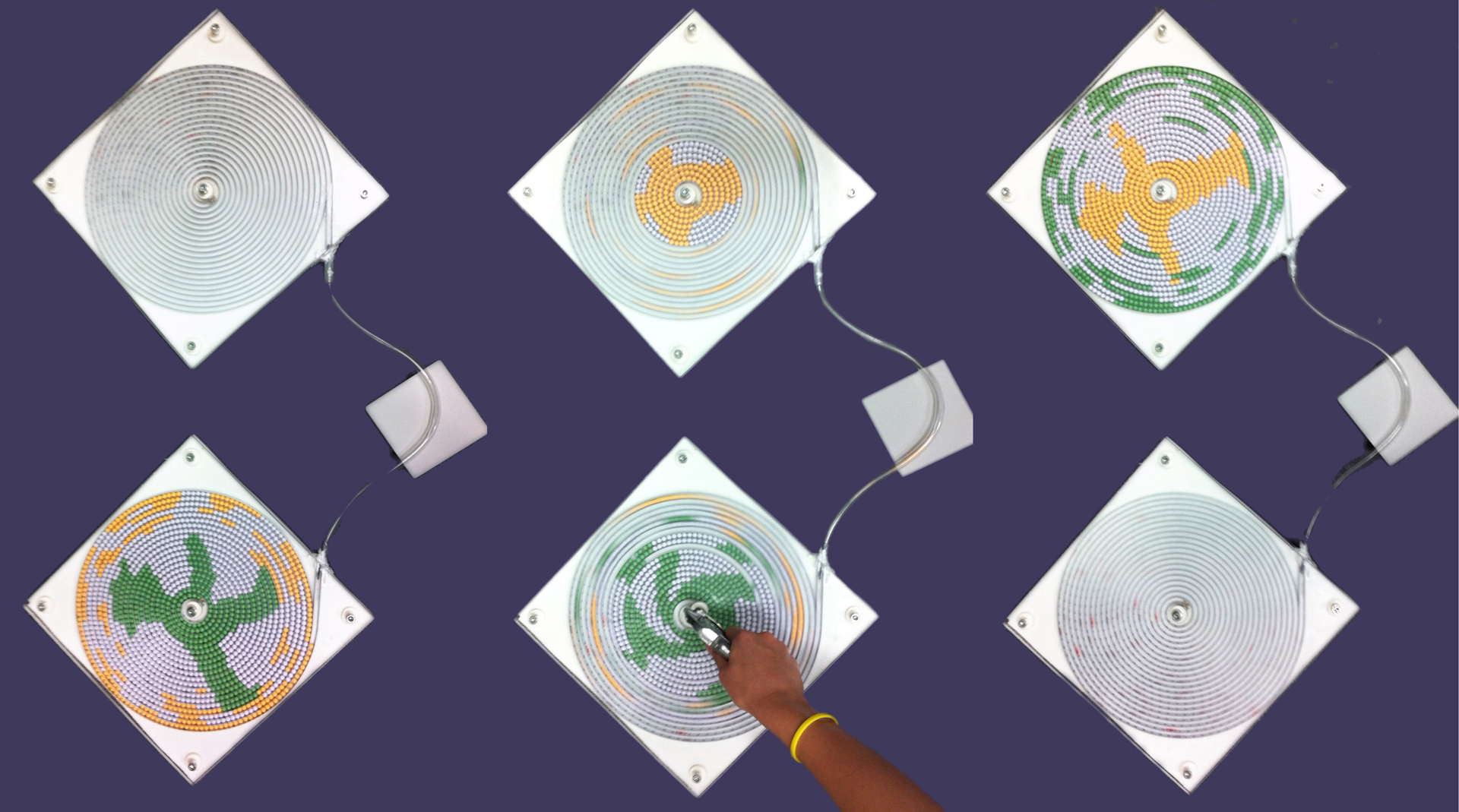Alvaro Cassinelli, Christian Sandor, Daniel Saakes: Back And Forth – Pneumatic Anadrome [Serial Painting 1]
Artist(s):
Title:
- Back And Forth - Pneumatic Anadrome [Serial Painting 1]
Exhibition:
Category:
Artist Statement:
Summary
“Serial Paintings” are displays that alternatively reveal and destroy images by just pushing a fixed sequence of coloured beads through a more or less complex guiding structure – a spiral, a space filling fractal or even an arbitrarily complex labyrinth.
Abstract
“Serial paintings” are a series of works highlighting the role of the canvas – or more generally the support of the painting – in the construction of the final form. “Back and Forth – Pneumatic Anadrome“ is the first work in the series. In it, a string of coloured beads is pushed back and forth between two spiralling “canvases” using compressed air. Without rearranging the order of the beads, the string is forced to coil alternatively into one or the other spiral: this folding and unfolding reveals in turn images or text with opposing meanings or connotations. Each image has to be destroyed in order to create the other; this cyclic process of creation and destruction is purposefully revealed and triggered by the curiosity of the public.
The canvas of a traditional painting is relegated to the role of a pigment-supporting structure. The “canvases” of our Serial Paintings are instead labyrinths of convoluted plumbing covering that surface, guiding linear sequences of coloured beads. They are capable of displaying several images in the process (our display behaves true to the original meaning of the word, which is to “unfold, spread out, unfurl “, from old French desploiir, modern deployer and from Latin displicare).
Without rearranging the order of the beads, the string is forced into the particular shape of the guide; this process decrypts the sequence as a two-dimensional image. Since the sequence is fixed, the display can only contain a limited number of images. They cannot be seen at the same time but can be retrieved by pushing the beads an exact amount of distance. This is in contrast with ordinary ways of creating images, including displays or printers, that require a mechanism to arbitrarily position a “writing head” in two-dimensional space (regardless of the way of addressing – be it raster scan or vector). It is this “random access” to the surface that render them capable of producing arbitrary images.
The present work consist of two acrylic spirals that act as the matter guiding medium. This allows for a unique (but straightforward) encoding, equivalent to the linguistic anadrome: “spelling” the image backwards (the sequence is reversed when moving from one spiral to another) reveals a new image with a different meaning – perhaps even its opposite.
Technical Information:
This piece is made out of laser cut acrylic, metallic strip and plastic beads. The canvases are placed far away (either hanging on the wall or attached to the ceiling). Images are “sent” back-and-forth through a long transparent plastic tube.
These “pneumatic paintings” are operated by the public using a hand pump, requiring an interesting and suggestive form of exertion (alternatively, an air compressor can be used to reduce the effort if necessary).
All Works by the Artist(s) in This Archive:
- Alvaro Cassinelli
-
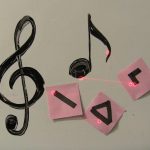
scoreLight
[SIGGRAPH Asia 2009] -
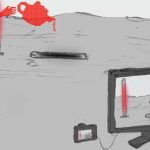
Ghostly Images Appearing in Moving Human...
[SIGGRAPH Asia 2008] -
![Back And Forth - Pneumatic Anadrome [Serial Painting 1]](https://history.siggraph.org/wp-content/uploads/2021/05/Asia2020_Cassinelli_Sandor_Saakes_BackAndForthPneumaticAnadrome1-150x150.jpg)
Back And Forth - Pneumatic Anadrome [Ser...
[SIGGRAPH Asia 2020] -
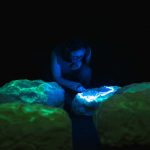
Radiant Soma
[SIGGRAPH 2022] -
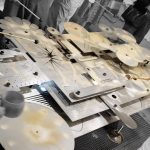
Cymatic Ground
[SIGGRAPH Asia 2023] - Christian Sandor
- Daniel Pieter Saakes

